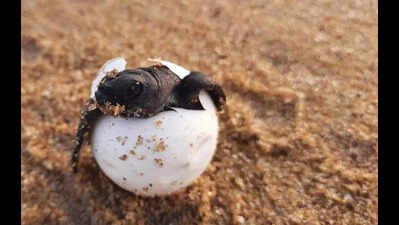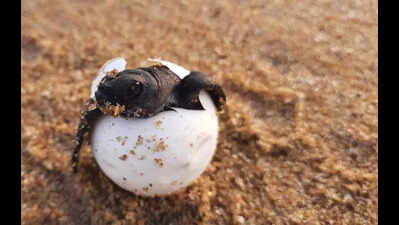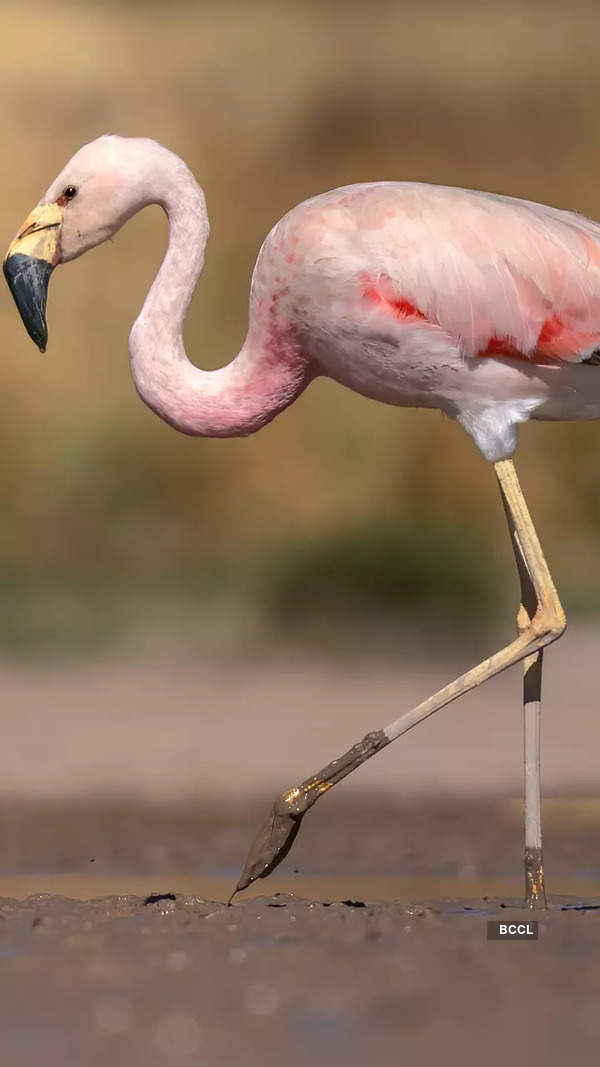- News
- City News
- bhubaneswar News
- Rising temperatures skewing sex ratio of sea turtles towards females: Study
Trending
Rising temperatures skewing sex ratio of sea turtles towards females: Study
Kendrapada: Rising global temperatures are leading to a increasingly feminised turtle population along Odisha's coast, a recent study has found, raising concerns about the future survival of the species.
The research, jointly published by the Indian Institute of Science (IIS) and Dakshin Foundation, Bengaluru, on ‘Monitoring Sea Turtles in India 2008-2024', focused on the world's largest rookery of Olive Ridley sea turtles at Gahirmatha Marine Sanctuary in Kendrapada district, and Rushikulya beach in Ganjam district.
B C Chaudhury, former wildlife scientist of Wildlife Institute of India (WII), Dehradun, who was among the researchers, said data collected over 15 years shows that sex ratio of turtle hatchlings at the Rushikulya rookery are significantly skewed towards females, with an average of 71% female turtles being born during mass-nesting events.
The sex of hatchlings is determined by sand temperature during incubation, a phenomenon known as temperature-dependent sex determination (TSD). "When eggs incubate above 31°C, the hatchlings will be female," said Muralidharan Manoharakrishnan, senior wildlife researcher at WWF-India. "Temperatures fluctuating between extremes produces a mix of male and female turtles."
Experts warned that this trend could be catastrophic for the survival of the species. "Being polygamous, a male sea turtle can mate with only two to three females. Falling numbers of male turtles will be disastrous for the population," Chaudhury said.
The research team recommends comprehensive monitoring beyond just counting nesting turtles. "We need professional scientific organisations to study tag recovery, morphometry and climatological data in relation to breeding seasons," Chaudhury added.
The findings highlight the urgent need for conservation strategies to address the impact of climate change on sea turtles along the Odisha coast.
More than 15 lakh Olive Ridley turtles laid eggs along the state's coast this year. While more than 6 lakh laid eggs from March 5 to 10 on Gahirmatha beach, nearly 9 lakh did so at the Rushikulya rookery in two phases in Feb and March.
End of Article
FOLLOW US ON SOCIAL MEDIA











